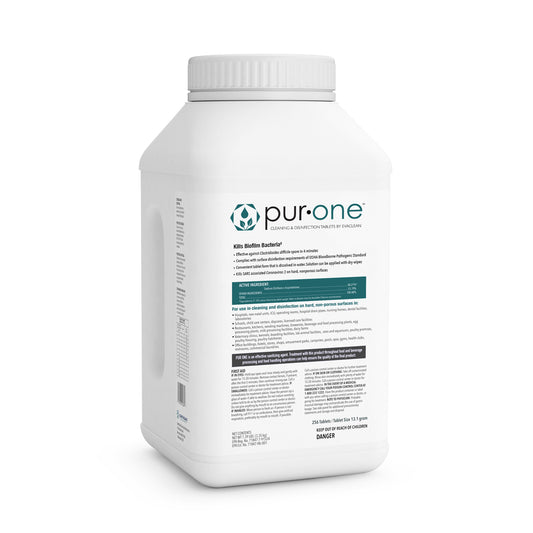With the ongoing global health concerns, disinfecting surfaces to prevent the spread of diseases has become a major focus. While COVID-19 remains a significant concern, other viral infections, such as monkeypox, have emerged as threats that require attention. Although monkeypox is primarily transmitted through close contact with infected individuals, contaminated surfaces can also play a role in its spread. Understanding how to properly disinfect surfaces in environments where monkeypox may be present is essential for reducing transmission risks.
What is Monkeypox?
Monkeypox (mpox) is a viral infection caused by the monkeypox virus, which belongs to the same family as the smallpox virus, though it is less severe. It is primarily transmitted through direct contact with bodily fluids, lesions, or respiratory droplets of an infected person. However, the virus can also survive on surfaces and materials, particularly in environments where the virus is actively circulating. Contaminated surfaces can become sources of indirect transmission, making disinfection a crucial step in minimizing the risk of outbreaks.
How Does Monkeypox Spread Through Surfaces?
Monkeypox is primarily spread through skin-to-skin contact or contact with bodily fluids. However, it can also survive on contaminated surfaces such as bedding, clothing, and other materials. Surfaces that come into contact with an infected individual can become reservoirs for the virus, which may then be transferred to other people who touch these surfaces and subsequently touch their mouth, nose, or eyes. High-touch areas, such as door handles, light switches, countertops, and medical equipment, are particularly vulnerable to contamination.
The virus can survive on surfaces for varying periods, depending on the type of material, temperature, and humidity. Studies suggest that orthopoxviruses, including monkeypox, can survive for days or even weeks on nonporous surfaces. This underscores the importance of regular cleaning and disinfection, especially in healthcare settings, shared living spaces, and other environments where individuals with suspected or confirmed monkeypox have been present. Given the ease with which the virus can be transmitted through both direct contact and contaminated surfaces, it is essential to focus on maintaining a clean and sanitized environment.
Proactive Measures to Prevent Mpox
For monkeypox, breaking the chain of transmission requires a multi-faceted approach that should include extensive hygiene. The surface cleaning and disinfection component of prevention must be completed using a disinfectant that is EPA registered as effective against the organism of concern.
In high-risk environments, it is wise to increase the frequency of cleaning from daily to twice or even three times a day, and to ensure all high-touch surfaces are addressed in the disinfection process, including floors, even walls and ceilings. The use of enhanced disinfection procedures such as electrostatic spraying should also be considered but, it is important to ensure the disinfectant used is EPA registered for electrostatic application.
The process of laundering bed linens, towels, and other soft fabrics from rooms occupied by infected individuals requires special attention, particularly in a communal laundry setting. As much as possible, laundry from known contaminated rooms should be cleaned separately and at no time should the contents be opened, shaken or sorted. To mitigate the risk of cross contamination, follow good basic practices and keep dirty incoming material separate from clean outgoing material in handling areas.
Though healthcare environments may present the highest risk, non-medical facilities such as schools, hotels, offices, stadiums, and other public venues or even homes, may contain infected or asymptomatic individuals. To prevent monkeypox infections from spreading, everyone should follow the same precautions when cleaning, whether it’s guest rooms, communal living quarters, or private residences.
7 Steps to Protect Surfaces Against Monkeypox
To effectively reduce the risk of monkeypox transmission, a targeted approach to disinfecting surfaces is necessary. It’s important to follow a systematic disinfection protocol, especially in areas where infected individuals may have spent time. Here are some key principles to keep in mind:
- Use EPA-Approved Disinfectants from EPA List Q for monkeypox
- Cleaning vs. Disinfecting: What’s the Difference?
- Use Non-Toxic Cleaning Products
- High-Touch Surfaces Require Special Attention
- Door handles and knobs
- Light switches
- Countertops and tables
- Bathroom fixtures (toilets, faucets)
- Bed rails and furniture in healthcare settings
- Shared electronic devices such as keyboards, phones, and tablets
- Wear Personal Protective Equipment (PPE)
- Disinfect Soft Surfaces and Laundry
- Implement Enhanced Disinfection
Proactive Protection with Proper Disinfection
While monkeypox is not as easily transmissible as some other viruses, surface contamination still poses a risk in both healthcare settings and the community. By implementing effective surface disinfection protocols, it is possible to significantly reduce the risk of monkeypox transmission and protect vulnerable populations.
Using EPA-approved disinfectants, prioritizing high-touch surfaces, and ensuring proper PPE use can all contribute to creating safer environments during outbreaks. Whether in homes, healthcare facilities, or public spaces, disinfecting surfaces is a crucial step in limiting the spread of this virus and helping communities stay safe.






